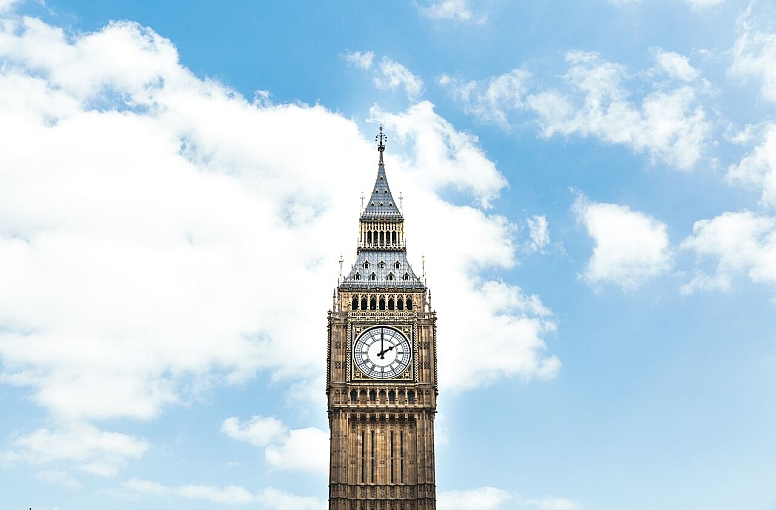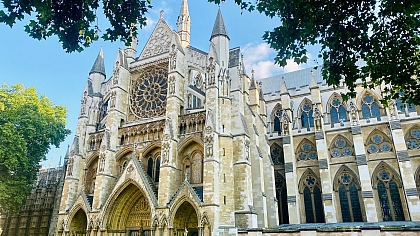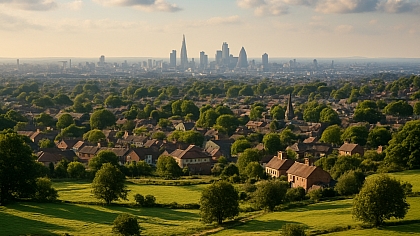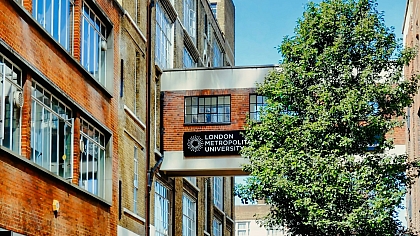
Tick-Tock On The Thames: The History of Big Ben
As you stand on the banks of the River Thames, the steady tick-tock of one of London's most iconic landmarks - Big Ben - captures your attention. This majestic clock tower not only marks time but also embodies London's historical and global influence on our perception of time.
The city's role as the birthplace of Greenwich Mean Time (GMT) has cemented its reputation as the world's timekeeper.
This influence has even permeated home décor styles. London-inspired elements, especially vintage wall clocks, have become essential for evoking a sense of classic British elegance and functionality in our homes. But, there's far more to this iconic clock and London's relationship with time than initially meets the eye.
A Common Misunderstanding
Perhaps one of the most common misconceptions about “Big Ben” is its name. Contrary to what many people think, that is not the name of the clock nor the tower - it is the nickname of the Great Bell inside the tower.
So, while it’s popular to refer to the whole tower as “Big Ben”, the correct name is actually “Elizabeth Tower”. Formerly also known as the “Clock Tower”, the building was renamed in 2012, during Queen Elizabeth II’s Diamond Jubilee.
Architectural Marvel
Designed by architects Charles Barry and Augustus Pugin, the Elizabeth Tower serves as an exemplary model of the neo-Gothic architecture movement that swept Britain during the Victorian era. Its intricate stonework, spires, and buttresses are emblematic of this architectural style, blending aesthetics and function.
The clock faces, decorated with opulent golden framing and Roman numerals, offer a striking contrast to the tower's grey masonry. The mechanism of the clock was designed by Edward John Dent and later completed by his stepson, Frederick Dent. Since its opening in 1859, the clock has maintained its remarkable accuracy by the addition or removal of pennies on its pendulum.
The Sound of Time
The bell currently present in the Elizabeth Tower is different to the original. The initial bell was recast in 1858 due to a crack during testing. The Big Ben that we know today has developed a crack too, in 1859, however, it remains in use to this day, after some alterations.
The sound of Big Ben resonates far beyond London's boundaries. Weighing over 13 tons, the Great Bell generates its iconic chimes, accompanied by the melody of the "Westminster Quarters". A sound deeply familiar to every Londoner, that has now become synonymous with British culture.
Cultural Impact
This clock tower and its chimes have been featured in numerous films, literature, and artworks. It is the backdrop for New Year's Eve celebrations and other significant British events. Even during tumultuous periods like wars, the clock has remained functional, symbolising British resilience and continuity.
The clock's influence isn't limited to just timekeeping; its intricate design has inspired elements of other traditional British décor, such as grandeur ceilings with chandeliers, which like Big Ben, combine function and aesthetic in a uniquely British way.
Recent Renovations
Over the years, the clock tower has undergone several renovations. One of the most significant and complex was completed very recently, in 2022. The renovation lasted over 5 years, aiming to restore and preserve the tower’s historic elements as well as structural integrity for years to last.
As you walk away from the River Thames, you carry with you a richer understanding of this monumental clock. Popularly referred to as “Big Ben”, the Elizabeth Tower serves not only as a keeper of time but also as a keeper of British history and cultural influence, extending even to the personal spaces of our home décor.











